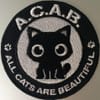Feminism vs Sex Workers

After decades of struggle, theorizing and organizing, the feminist left in the US has mostly embraced sex worker struggles as part of their own—at least in discourse if not always in action. But as we face a horrifying queerphobic moral panic and anti-trans genocidal action, parts of the left and the literary world have been reviving the name of some of America’s anti-sex-worker luminaries, in particular Andrea Dworkin and Catharine Mackinnon. To me it seems that their revival is the left wing piece of that moral panic, which masks a latent anti-queerness behind a moralizing sex negativity. (See also: kink at pride discourse)
But I arrived at that conclusion because I learned all about the emergence of these figures in a series of feminist struggles and controversies across the 70s, 80s and 90s commonly known as The Sex Wars. And I learned it all thanks to the incredible archival, historical and theoretical work of my partner and comrade, Sophie Lewis.
Sophie is teaching a course on these issues and these figures, a course that I think will provide incredibly important historical and theoretical context and understanding for the current moment of moral panic and violent outrage. Did you know that before she arrived at her anti-porn position Andrea Dworkin was a utopian proponent of polymorphous perversity? Or that the anti-porn organizers worked directly with Ed Koch to help gentrify Times Square?
There are some wild and fascinating histories. The course is online, open to anyone, and will take place Sundays in November. I’ll be attending as well!

In the late 1970s and early 1980s, a series of acrimonious disagreements exploded the US feminist movement—over pornography, prostitution, sadomasochism, and other matters of sex and power, pleasure and violence. What were the terms and stakes that shaped the several “sides” of the so-called “feminist sex wars”—beyond and in excess of the “pro-sex” and “anti-porn” positions to which the history of feminism’s belligerent parties are all too often reduced? How can we understand, in the context of capitalist development, the ways that each of these “sides” were entangled with other political trajectories? And what sort of light does this flashpoint moment in the history of feminism shed on contemporary debates regarding sexual representation, sexual conduct, and the controversial rubrics—”OnlyFans,” film ratings, “no kink at Pride,” sexting, “revenge porn,” sex-trafficking, and others—through which they are refracted today? Forty years on, how have lesbian-socialist, black feminist, youth-liberationist, sex-radical, working-class butch/femme, and transfeminist permutations of the politics of “pleasure and danger” come to inhabit the spaces within feminist activism and discourse that were “shook open” after the infamous 1982 Barnard Conference on Sexuality—which, as theorist Susan Stryker put it, “allowed transgender feminism to expand and grow in the decades yet to come”?
In this course, we will explore the various dividing lines that once rent US feminism—and that, though faded, have yet to disappear altogether. We will examine the fraught roots of the conflict in early grassroots campaigns against misogynist norms in the media that morphed and calcified into censorship drives that wound up affecting above all gay and lesbian bookstores. We will go on to explore how the feminist fight for and against anti-porn activism impacted relations between women’s studies and queer advocacy, feminism, and porn-worker liberation movements. And we will also dwell in some detail on “Barnard 1982” itself, asking: what can we learn, both from its fateful unfolding and from the politics of its ongoing memorialization? Is there something to be said in favor of the laying-bare of feminist enmities—indeed, enemy feminisms? Through readings in both history and theory by Stryker, Catharine MacKinnon, Andrea Dworkin, Gail Dines, Carol Leigh, Carole Vance, Lisa Duggan, Joan Nestle, Gayle Rubin, Jennifer Nash, Amber Hollibaugh, Ellen Willis, Audre Lorde, and others, we will consider questions like: What is violent pornography? How (if at all) should it be produced, regulated, distributed, discussed, and consumed? What is violence against women, representationally? Why is it so prevalent in our culture, and how might we change this? Whom do anti-prostitution laws keep safe? What furthers the conditions of possibility for black feminist porn to flourish? Why were the transsexual women active in the radical feminist movement of the late 1960s almost entirely erased from its history after 1973? And what distinguishes feminist pornophobia and whorephobia from their un-feminist conservative analogs?
